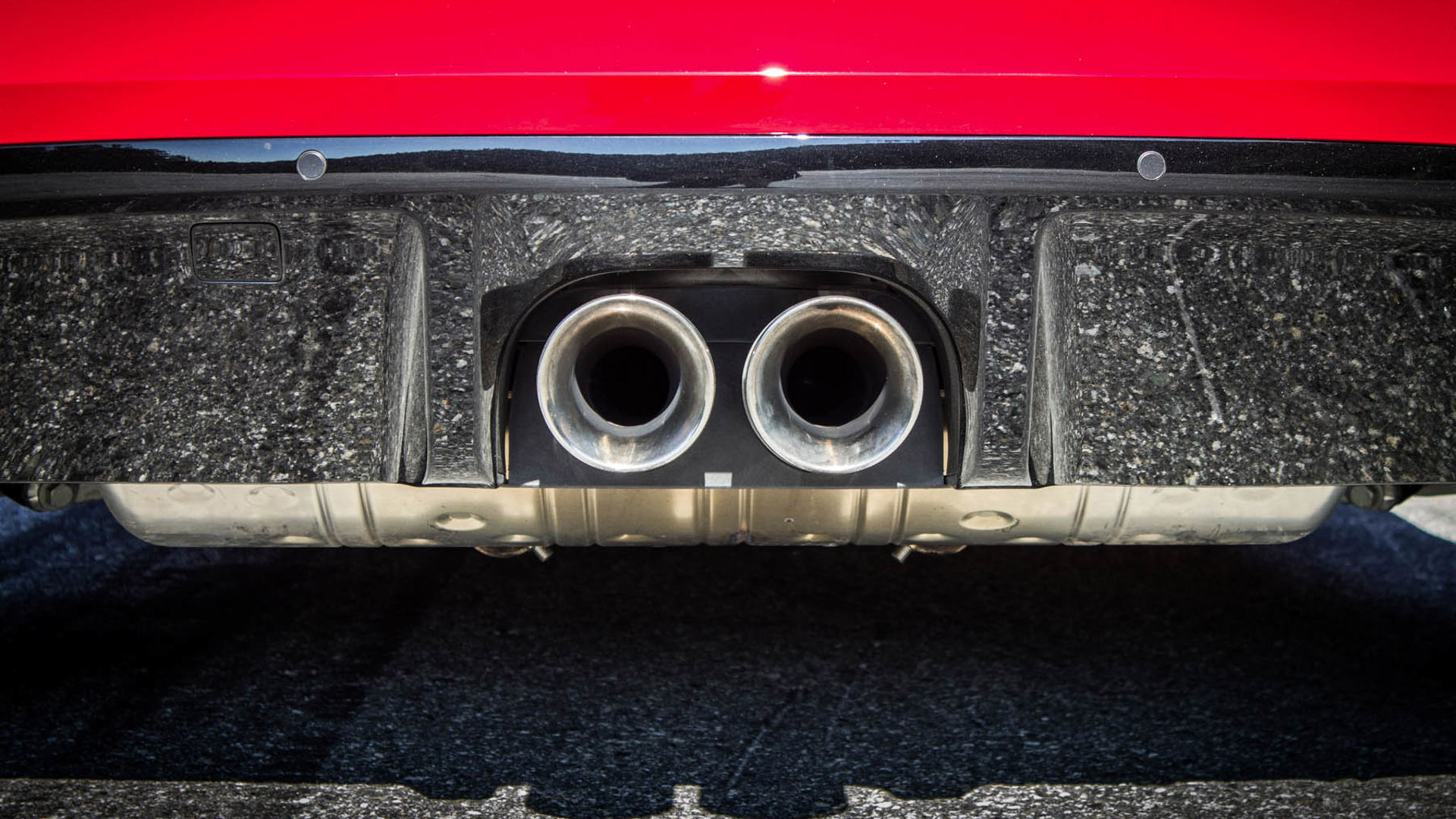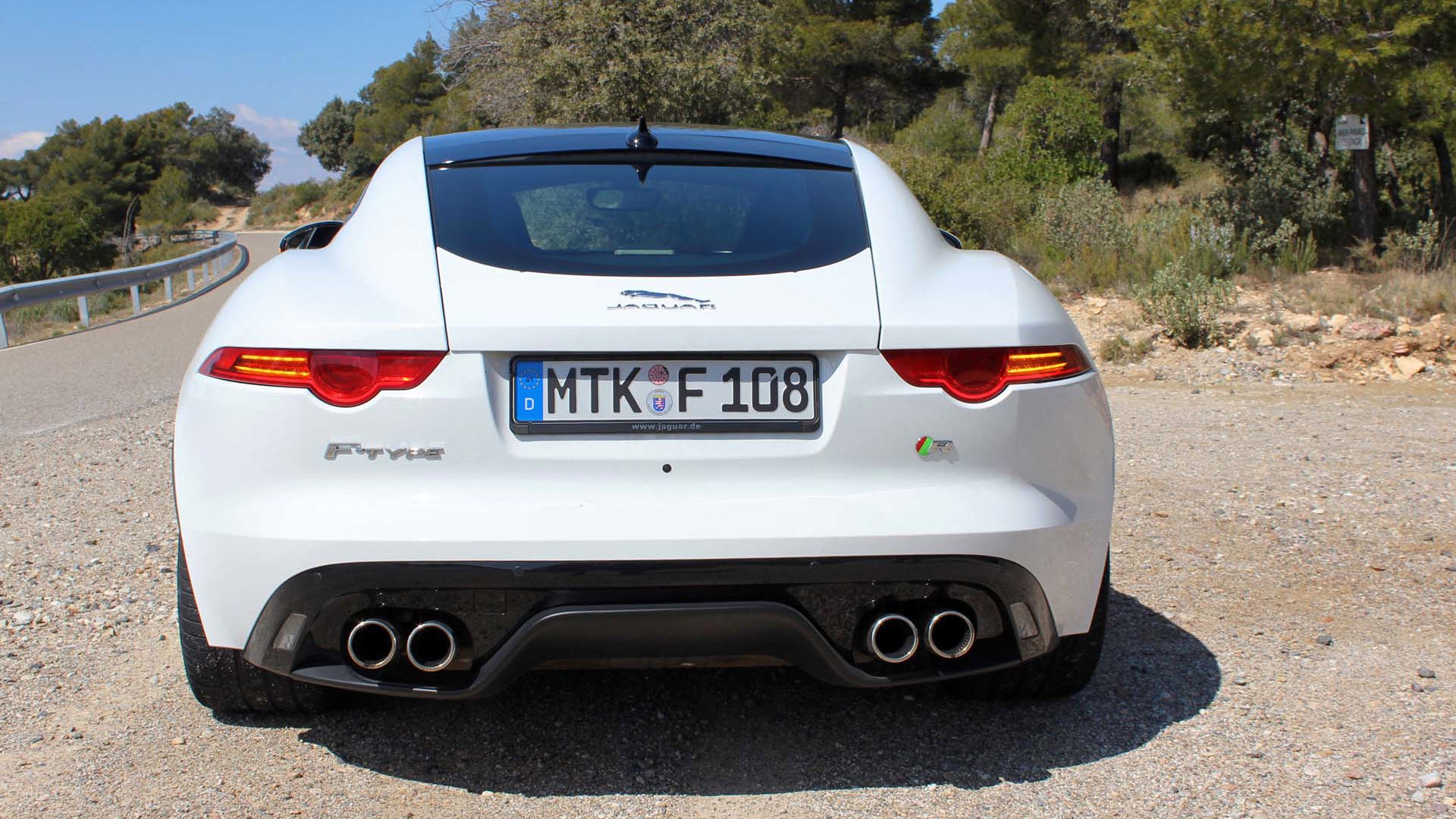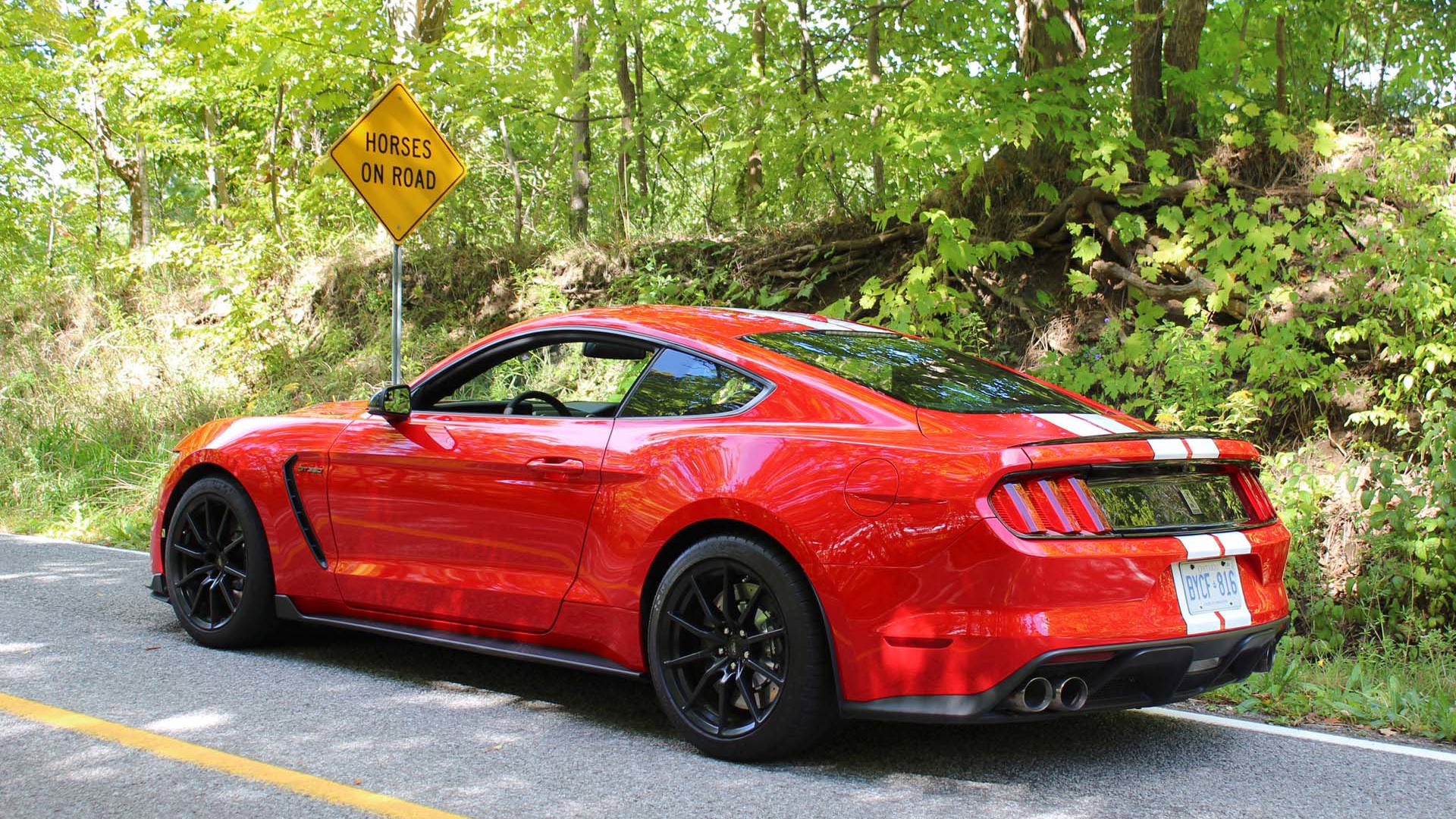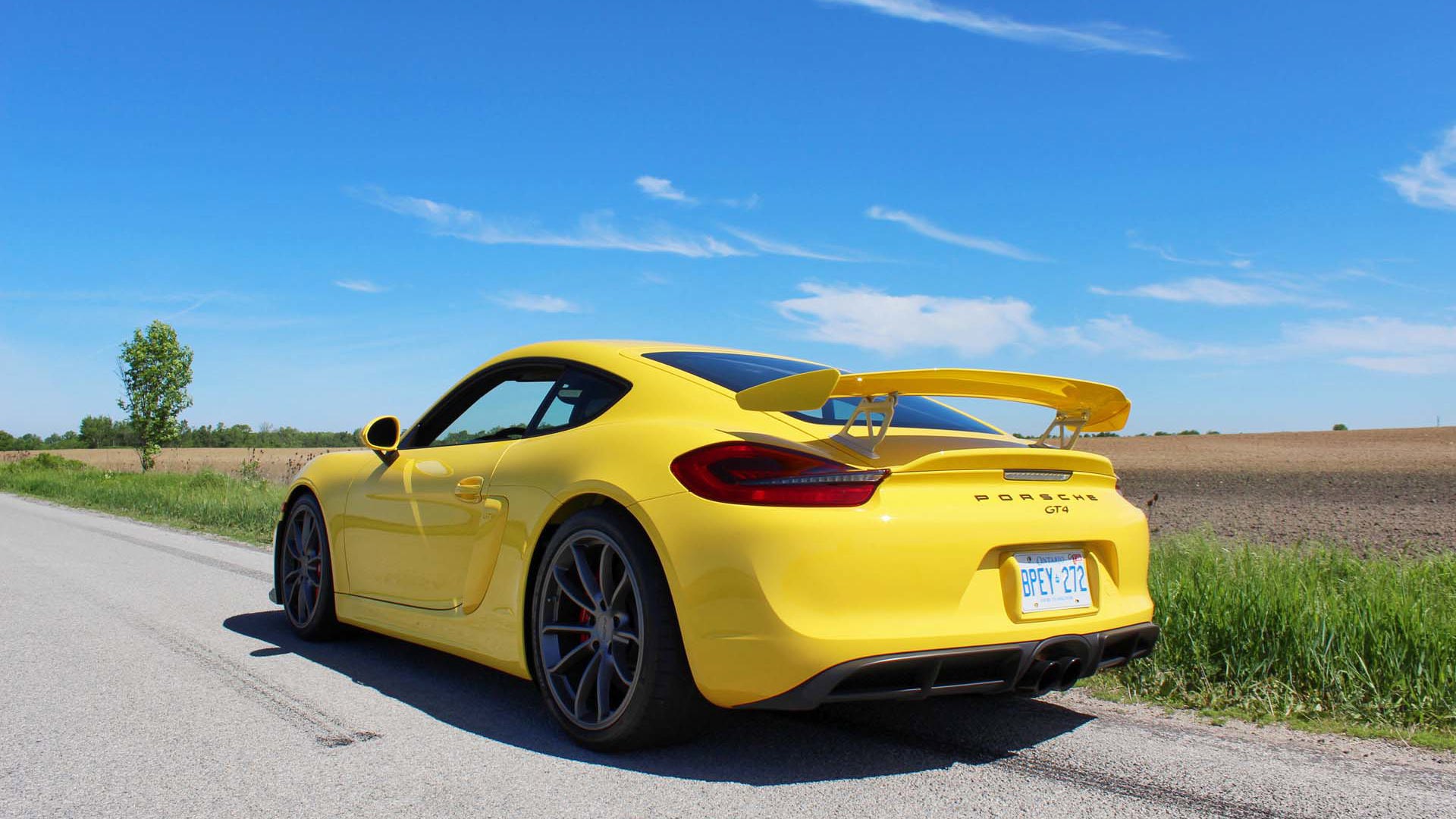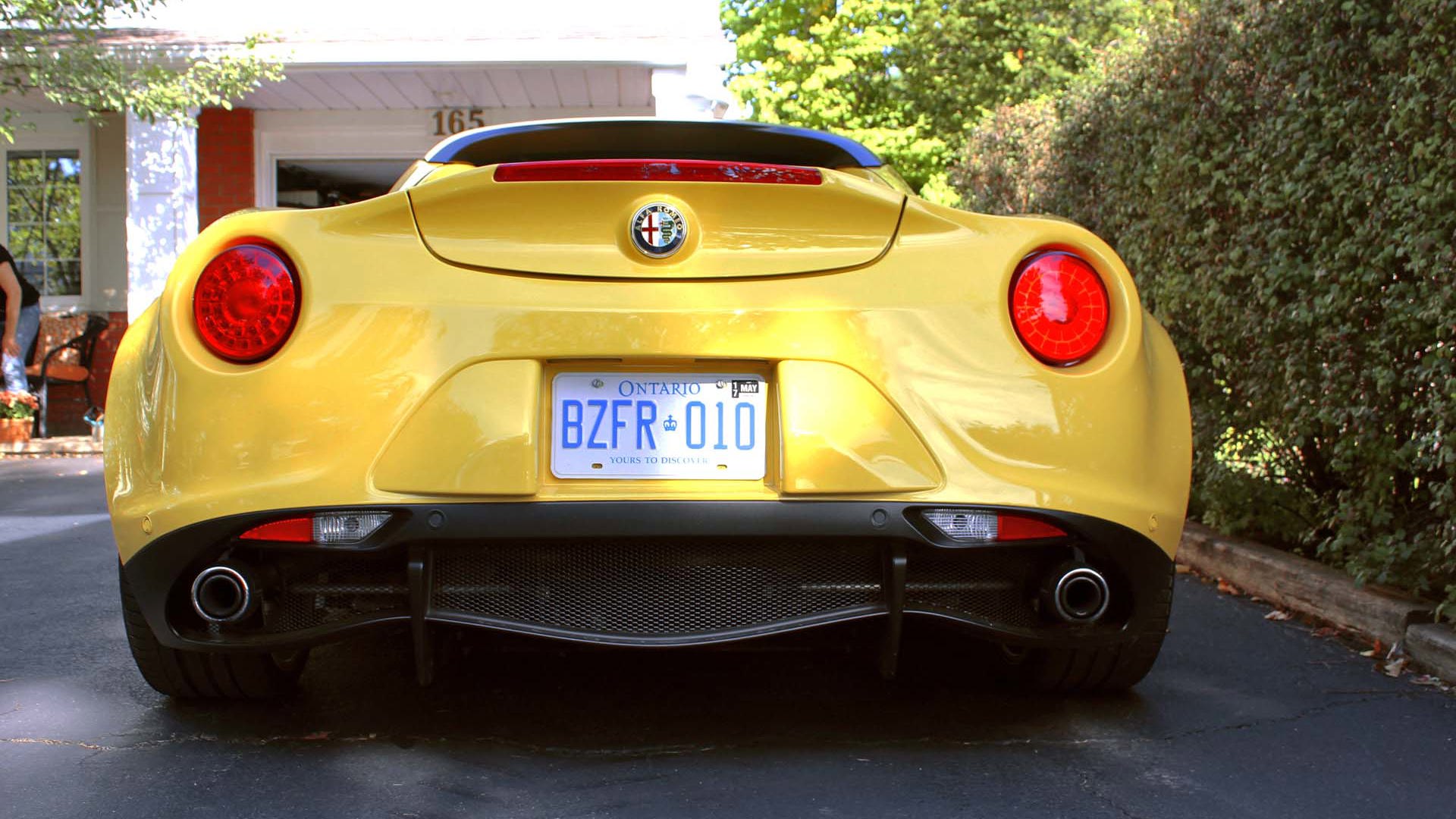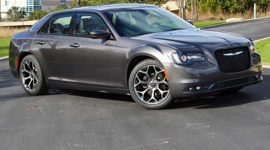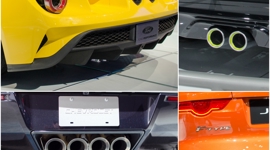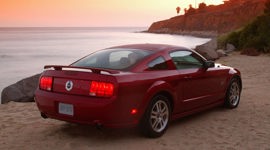Technology can be a beautiful thing, and it sure is doing wonders for the automobile. Today’s cars are increasingly safer, faster, more comfortable, connected and fuel efficient. And way louder. Wait… what?
There is a stampeding herd of performance cars on the market that have the capacity to politely hum to the corner store or conversely rattle your neighbour’s windows and send squirrels into early hibernation. All thanks to a relatively recent automotive gift (or curse) known as the dual-mode exhaust system.
The first clue to its existence is a button in the car’s interior that shows a cute little icon of a dual exhaust tip. Pressing this can change an exhaust note from demure to demonic, from Enya to Eminem. Poster children for this tech include the Mustang Shelby GT350, Jaguar F-Type R, Mercedes-AMG GT, any Maserati and the 2017 Audi R8. But what about noise regulations?
In “normal” mode, your sports car likely cruised by the test microphones as a picture of innocence and aural virtuosity. Yet no holds seem barred (nor ear plug too effective) when it comes to engineering the system’s sport mode. And all perfectly legal. Although I must say, the first time I drove the 510 horsepower V8 Jaguar F-Type R around my ’hood I was fully expecting to be hauled away for disturbing the peace, such is the epic repertoire of burbles, blares, spits and backfires. My wife vowed never to get in the car with me again.
Porsche was one of the first to offer a sport exhaust system (and still charges a princely sum for the option), while other makers like Jaguar, Ford, Chevrolet, Audi, BMW, Maserati and Mercedes-AMG include the tricky devices as standard equipment.
The key to all this sonic mayhem lies within the complex dual-mode muffler – generally two of them when paired with V-configured engines. The mufflers offer two routes of escape for the exhaust gases. One is a circuitous path that wends its way around inside the box, encountering various bends and baffles along the way. The other route simply bypasses all that with a straight-through pipe/resonator. At the entrance to the muffler is a solenoid-operated valve that directs the exhaust flow. In the case of the Jaguar F-Type, the open position has the exhaust and resulting noise running free, while the closed position sends the spent gases on a scenic route that adds about half a dozen twists and turns to the journey.
Various elements control the valve’s operation, the most obvious being the physical button in the cockpit. The majority of dual-mode exhaust systems are tied into the car’s dynamic presets. Selecting Sport mode in any high-performance car equipped with a dual-mode exhaust will usually call up the more vocal setting.
Some vehicles (the Corvette Stingray, for one) will activate sport exhaust even when driving in “normal” mode if throttle percentage, gear selection and rpm indicate a more aggressive driving style.
And don’t think the resulting ruckus is merely a product of happenstance. Manufacturers are well aware of the importance of a brand’s aural signature – behind each and every blat, pop and pissed-off neighbour is an army of engineers who sweated every aural detail.
With the Jaguar F-Type R, fifty different exhaust systems were assessed before signing off. Andrew Lowis, the fuel calibration manager for the car, says “The powertrain sound quality of this car was absolutely fundamental to the character of the F-Type.”
And what about all the pops and backfires that spit from the pipes when lifting off this cat’s gas pedal? “Usually you’d cut the fuel to the cylinders when the driver lifts off the accelerator,” explains Lowis. ”We are delaying the point when we do that and igniting later than we might in normal circumstances. It produces a controlled misfire.” This man deserves Knighthood.
Porsche uses the same technology with its new four-cylinder turbo 718 Boxsters. With the demise of the seductive naturally aspirated flat-six engines, Porsche had to spice up the monosyllabic growl of the four-pots. In Sport Mode you get the classic rude pops on overrun, but interestingly in the more serious Sport Plus mode, Porsche does away with that frippery. Presumably because the fuel is going to better use.
Here are a few of the more theatrical, vociferous and outright rude exhaust notes running amok in our society.
Dodge Challenger Hellcat
You’d expect the most powerful American production car – ever – to announce its presence in no uncertain terms. And you’d be right. Fire up the Hellcat’s 707 hp, 650 lb-ft supercharged 6.2L Hemi V8 and it barks to life and settles into an ominous idle. Blip the throttle and the revs jump like there’s no flywheel. Invariably, the Hemi’s unearthly bellow is underscored by the screech of tortured rubber. Blend in just the right amount of supercharger whine and you’ve got a heavy metal repertoire to rival Eddie Van Halen.
Jaguar F-Type Coupe R
The only other Brit with the vocal range of this 5.0L supercharged V8 cat is Julie Andrews. But while Ms. Andrews is all sweetness and light, this Jag is pure din and sin. Picture Mary Poppins belting it out in an alley after a night of smoking unfiltered Camels and chugging Drano. Apparently, this is legal.
Ford Mustang Shelby GT350
When it comes to legendary Detroit sounds, a V8-powered Mustang is right up there with the back catalogue of Motown Records. Then along came the Shelby GT350. The 5.2L naturally aspirated “Voodoo” V8 kicks out 526 hp, 429 lb-ft of torque and spins to a dizzying 8,400 rpm. With a flat-plane crank (like Ferrari V8s), the Voodoo sounds like no other American V8. Gone is the characteristic burble, replaced by a hard-edged metallic idle that crescendos to bellicose, deep-chested howl. Think of Chewbacca getting a vasectomy. Or not.
Mercedes-AMG GT S
AMG has never been shy about advertising its hairy-chested V8s with window rattling exhaust notes, but the fact that this modestly displaced 4.0L V8 with a pair of turbos stuffed into its “V” makes such a glorious racket is quite astounding. Turbos tend to mute exhaust sounds, but not here. The gurgling idle moves on to an impressive repertoire of upshift blats, downshift barks and a feral yowl when the 503 hp and 479 lb-ft are let loose.
Chevrolet Corvette Z06
Supercar. Hypercar. Call it what you want, the Chevrolet Corvette Z06 operates at a rarified performance plateau shared by few other vehicles. Its heart and soul is the supercharged 6.2L V8 that makes 650 hp, matched by a seismic 650 lb-ft of torque. Those four central exhaust trumpets get the prize for looks, and the sound emanating forth is both sophisticated and somewhat terrifying. Factor in supercharger whine and you’ve got a wild automotive soundscape.
Porsche GT4
Ah, the sweet song of the naturally aspirated Porsche flat-six. Intoxicating. Endangered. The 385 hp 309 lb-ft 3.8L naturally aspirated flat-six in Porsche’s muscle-bound Cayman sings the swan song to perfection. Transplanted from the 911, this six displays the classic Porsche aural signature – a guttural, thrummy idle that escalates to a high-pitched metallic wail when the revs pile on. Porsche has tuned the exhaust of this specialized Cayman to reflect its personality – feral and hard edged.
Alfa Romeo 4C
It’s not all about V8s and sixes here. Alfa commissioned Akrapovič – a Slovenian company known mainly for its motorcycle exhaust systems – to give the 4C’s mid-mounted 1.7L four-cylinder turbo some serious aural bite. Famously labeled a “wop engine” by FCA head honcho Sergio Marchionne, this blown four’s raspy aural signature is dominated by heroic atomic farts that echo off hill and dale when the six-speed dual-clutch upshifts.
